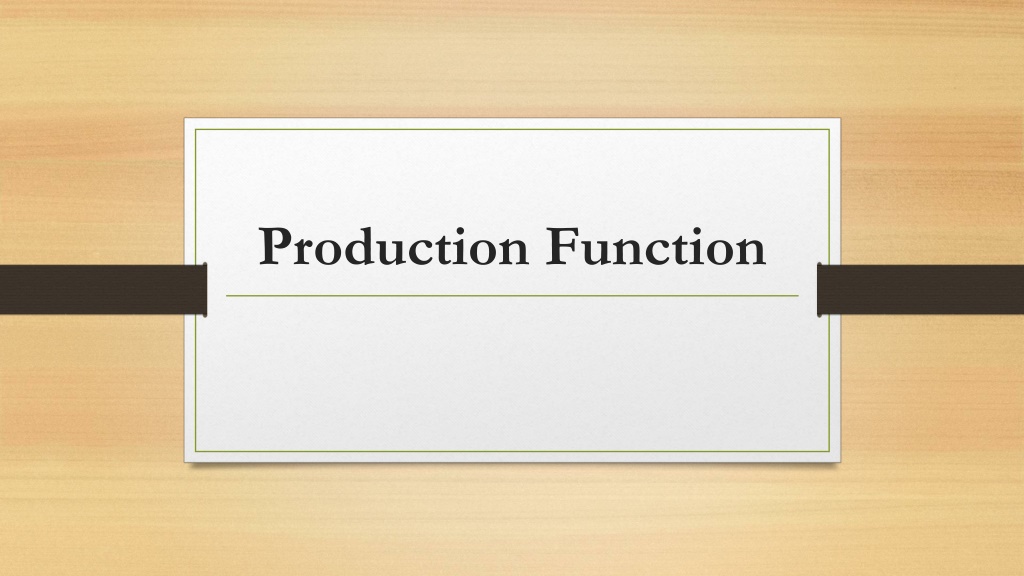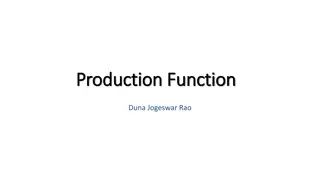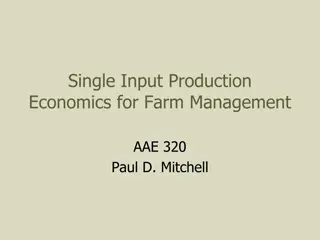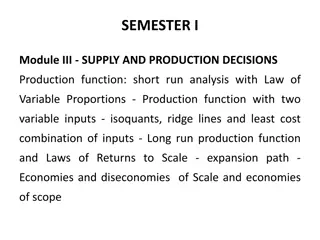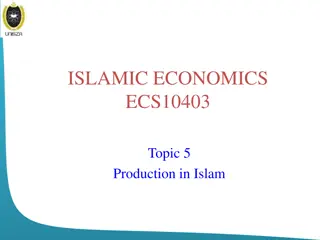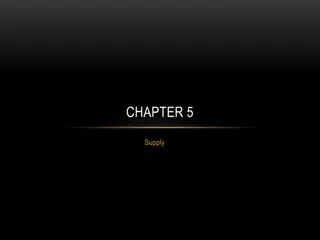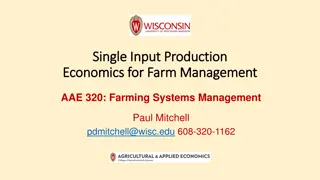Understanding the Production Function in Economics
The production function is a vital mathematical equation that determines the relationship between factors of production and the quantity of output. This function plays a crucial role in optimizing production efficiency by assisting in decision-making related to input levels, output quantities, and cost-effective production methods. It involves factors like entrepreneurship, labor, land, and capital, allowing businesses to determine the maximum output achievable and the optimal input combination for cost-efficient production. Various types of production functions exist, such as short-run and long-run functions, each serving specific purposes in production analysis and planning.
Download Presentation

Please find below an Image/Link to download the presentation.
The content on the website is provided AS IS for your information and personal use only. It may not be sold, licensed, or shared on other websites without obtaining consent from the author. Download presentation by click this link. If you encounter any issues during the download, it is possible that the publisher has removed the file from their server.
E N D
Presentation Transcript
Production Function The production function is a mathematical equation determining the relationship between the factors and quantity of input for production and the number of goods it produces most efficiently. It answers the queries related to marginal productivity, level of production, and cheapest mode of production of goods.
Four major factors of production are entrepreneurship, labor, land, and capital. They form an integral part of inputs in this function. The production function helps the producers determine the maximum output that firms and businesses can achieve using the above four factors. In addition, it aids in selecting the minimum input combination for maximum output production at a certain price point.
Production Function Formula The formula for the production function is as follows: Q = f (K, L) where, Q represents Output, f stands for Function, K indicates Capital Invested, L indicates Labour In words, this formula can be stated as follows: The output level generated depends on the unit of Capital and Labour invested during production.
Types of Production Functions Depending on the time period, two types of production functions can be seen: Short-run Production Function Long-run Production Function
Types of Production Functions It is the type of production function that shows changes in output with the change in one variable. Here, the other factors remain constant. There are two theories based on short-run production function: 1. Law of Variable Proportion 2. Return to Factor Long-run Production Function All the variables are changed in this production function but in the same proportion. Here, all the factors are variable, and the size operation can be increased or decreased as required. The theory based on the long-run production function is Return to Scale . Short-run Production Function
Types Of Production Function Short Run The firm cannot vary its input quantities in the short-run production function. The law of variable proportion gets applicable here. There is no change in the level of activity in the short-run function. The ratio of factors keeps changing because only one input changes concerning all the other variables, which remain fixed. The manufacturing firms face exit barriers. As a result, they can be shut down permanently but cannot exit from production.For any production company, only the nature of the input variable determines the type of productivity function one uses. If one uses variable input, it is a short-run productivity function; otherwise, it is a long-run function.
Types Of Production Function Long Run In the long-run production function, all the inputs are variable such as labor or raw materials during a certain period. Therefore, the operation is flexible as all the input variables can be changed per the firm s requirements. Furthermore, in the production function in economics, the producers can use the law of equi-marginal returns to scale. It leads to a smaller rise in output if the producer increases the input even after the optimal production capacity. It means the manufacturer can secure the best combination of factors and change the production scale at any time. Therefore, the factor ratio remains the same here. Moreover, the firms are free to enter and exit in the long run due to low barriers.
